Upload Large Files to Azure Blob Storage C# Mvc
Migrating data from an existing repository to Azure Blob and keeping information in sync in hybrid deployments can both be significant hurdles in many organizations' deject journeys. At that place are several Azure-native and third-party tools and services to help migrate information to Azure, the most popular ones being AzCopy, Azure Import/Export, Azure Powershell, and Azure Data Box. How can you know which is the right option for your Azure migration? Selecting the right tools is dependent on several factors, including timelines for migration, data size, network bandwidth availability, online/offline migration requirements, and more. This blog volition share and explore some of these Azure migration tools and the simple steps on how to easily migrate files to Azure Hulk storage, all of which can be enhanced with the help of NetApp Cloud Volumes ONTAP's avant-garde information direction capabilities for information migration, performance, and protection in Azure Hulk storage. Click ahead for more on: With data migration and mobility existence disquisitional components of deject adoption, Microsoft offers multiple native tools and services to back up customers with these processes. Let's explore some of these tools in detail. AzCopy is a control-line utility used to transfer data to and from Azure storage. It is a lightweight tool that can exist installed on your Windows, Linux, or Mac machines to initiate the data transfer to Azure. AzCopy tin can exist used in a number of scenarios, for transferring information from on-premises to Azure Hulk and Azure Files or from Amazon S3 to Azure storage. The tool tin besides exist used for information copy to or from Azure Stack likewise. Click to learn How to Upload Data to Azure Using AzCopy Azure PowerShell is some other command line selection for transferring data from on-premises to Azure Blob storage. The Azure PowerShell command Ready-AzStorageBlobContent can exist used to copy information to Azure hulk storage. Click ahead for Azure PowerShell and How to Use Information technology Azure Import/Export is a physical transfer method used in large data transfer scenarios where the data needs to be imported to or exported from Azure Blob storage or Azure Files In improver to big scale data transfers, this solution can also be used for apply cases like content distribution and data backup/restore. Data is shipped to Azure information centers in client-supplied SSDs or HDDs. Azure Data Box uses a proprietary Data Box storage device provided by Microsoft to transfer data into and out of Azure data centers. The service is recommended in scenarios where the data size is above twoscore TB and at that place is limited bandwidth to transfer information over the network. The almost popular use cases are former bulk migration of data, initial data transfers to Azure followed by incremental transfers over the network, likewise as for periodic upload of bulk information. AzCopy is available for Windows, Linux, and MacOS systems. At that place is no installation involved equally AzCopy runs as an executable file. The cipher file for Windows and Linux needs to be downloaded and extracted to run the tool. For Linux, the tar file has to exist downloaded and decompressed before running the commands. The AzCopy tool can be authorized to access Azure Hulk storage either using Azure AD or a SAS token. While using Azure AD authentication, customers tin can choose to authenticate with a user account earlier initiating the information copy. While using automation scripts, Azure Advertizing hallmark tin be accomplished using a service master or managed identity. In this walkthrough of AzCopy we will be using authentication through an Azure AD user account. The account should be assigned either the storage blob data contributor or the Storage Blob Data Owner function in the storage container where the data is to be copied, too every bit in the storage account, resource group, and subscription to exist used. i. Browse to the folder where AzCopy is downloaded and run the post-obit command to login: You will at present see details about how to log in to https://microsoft.com/devicelogin. Follow the instructions in the output and utilize the code provided to authenticate. ii. On the login page, enter your Azure credentials with access to the storage and click on "Side by side." three. Back in the command line, you will receive a "login succeeded" message. Update the <Azure storage account name> placeholder with name of the storage account in Azure and <container> with the name of the container you desire to create. Beneath, you lot can run into a sample command: Update the <Local of file in local disk> and <Azure storage account proper noun> placeholders in the above command to reverberate values of your environment, and <container> with the proper name of the storage container you created in step 4. Sample command given below: Note: In the above instance folder1 in the above command is the container that was created in pace 4. Upon successful completion of the control, the chore condition volition be shown every bit Completed. Update the <Location of binder in local disk>, <Azure storage account name>, and <container> placeholders in the in a higher place command to reflect values of your environment. Sample command given beneath: Your source folder content will appear as below: Sample command given below: Azure PowerShell cmdlets can be used to manage Azure resources from PowerShell command and scripts. In add-on to AzCopy, Powershell tin also exist used to upload files from a local binder to Azure storage. The Azure PowerShell command Set-AzStorageBlobContent is used for the aforementioned purpose. In this section nosotros will look into the commands that can be used to upload files to Azure hulk storage using PowerShell from a Windows car. 1. Install the latest version of Azure PowerShell for all users on the system in a PowerShell session opened with administrator rights using the following command: Select "Yes" when prompted for permissions to install packages. 2. Use the following command and sign-in to your Azure subscription when prompted: Update the place holders <resource group name> and <storage account name> with values specific to your environment, as in the sample command given below: $storcontext=$uploadstorage.Context Replace the placeholders <storage container name> and <Location of file in local deejay> with values specific to your environment. Sample given below: In one case the file is uploaded successfully, you will get a message like to what y'all tin can see in the screenshot below: Sample control given below: We have discussed how information migration to Azure can be easily accomplished using AzCopy and Azure PowerShell commands. Customers can too leverage NetApp Cloud Volumes ONTAP for information migration to the deject through trusted NetApp replication and cloning technology. Cloud Volumes ONTAP delivers a hybrid information management solution, spanning on-bounds as well as multiple deject environments. Cloud Volumes ONTAP is distinguished by the value information technology provides to its customers through high availability, information protection, and storage efficiency features such as deduplication, compression and thin provisioning. Deject Volumes ONTAP volumes can be accessed by virtual machines in Azure over SMB/NFS protocols and helps in achieving unparalleled storage economy through these features. Every bit the storage is beingness used more efficiently, Azure storage cost is also reduced considerably. NetApp Snapshot™ technology along with SnapMirror® data replication can ease up the data migration from on-bounds environments to the cloud. While SnapShot engineering science can be used to take Signal-in-time backup copies of data from on-bounds NetApp storage, SnapMirror data replications helps to replicate them to Cloud Volumes ONTAP volumes in Azure. The service can as well exist used to go along data between on-premises and cloud environments in sync for DR purposes. NetApp FlexClone® data cloning technology helps in creating storage efficient writable clones of on-premises volumes that can exist integrated into CI/CD processes to deploy examination/dev environments in the cloud. This enhances data portability from on-premises to deject and also within the deject, which tin can all be managed from a unified direction pain. Thus, Cloud Volumes ONTAP helps organizations attain agility and faster time to market for their applications. Another NetApp data migration service is Deject Sync, which tin quickly and efficiently migrate data from any repository to object-based storage in the cloud, whether information technology'southward from an on-prem system or between clouds. Customers can cull from native tools like AzCopy and Azure PowerShell to upload files to Azure Blob Storage. They can also leverage Cloud Volumes ONTAP for advanced data management and migration capabilities using features similar SnapMirror replication, NetApp Snapshots and FlexClone.
Tools to Upload Data to Azure Blob Storage
How to Upload Files to Azure Blob Storage Using AzCopy
azcopy login 
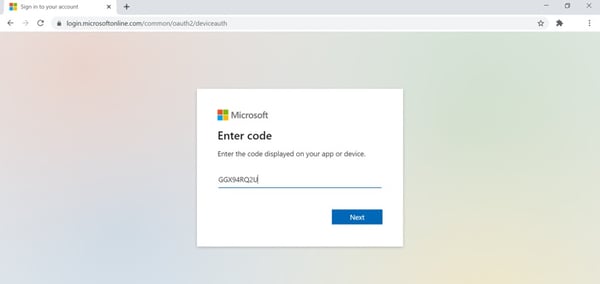

azcopy make "https://<azure storage business relationship name>.blob.core.windows.net/<container>" azcopy make "https://teststor1110.blob.core.windows.net/folder1" 
azcopy copy <Location of file in local deejay> "https://<azure storage business relationship proper noun>.cadre.windows.cyberspace/<container>/" azcopy re-create 'C:\azcopy\Testcopy\folder1\file1.txt' 'https://teststor1110.blob.core.windows.net/folder1' 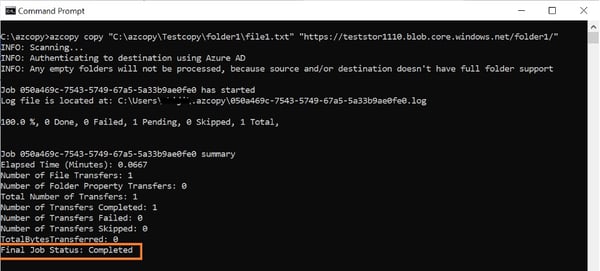
azcopy copy "<Location of folder in local disk>" 'https://<azure storage account proper name>.hulk.core.windows.net/<container>' --recursive azcopy copy "C:\azcopy\Testcopy\sample" "https://teststor1110.blob.core.windows.net/folder1" --recursive 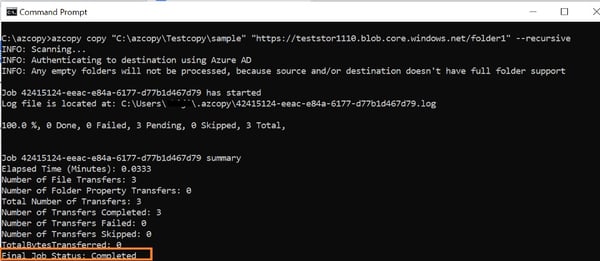

azcopy copy "<Location of folder in local disk>/*" 'https://<azure storage account proper noun>.blob.core.windows.cyberspace/<container>' azcopy copy "C:\azcopy\Testcopy\folder2\*" "https://teststor1110.blob.core.windows.net/folder1" 
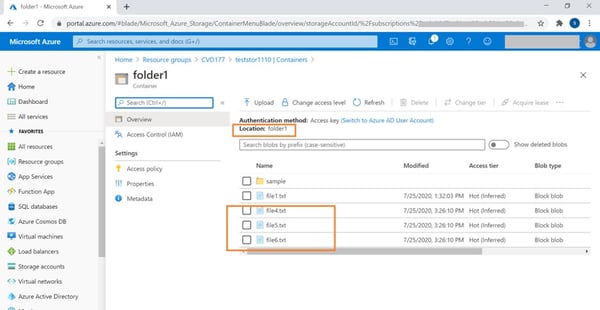
What Is Azure PowerShell and How to Use It
File Transfers to Azure Blob Storage Using Azure PowerShell
Install-Module -Name Az -AllowClobber -Scope AllUsers 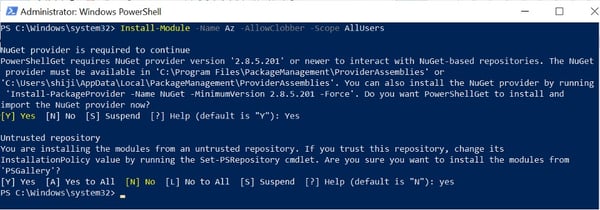
Connect-AzAccount 
$uploadstorage=Go-AzStorageAccount -ResourceGroupName <resources group proper noun> -Name <storage account proper name>
$storcontext=$uploadstorage.Context$uploadstorage=Get-AzStorageAccount -ResourceGroupName cvo177 -Proper name teststor1110 
Gear up-AzStorageBlobContent -Container "<storage container proper name>" -File "<Location of file in local disk>" -Context $storcontext Set-AzStorageBlobContent -Container "folder2" -File "C:\azcopy\Testcopy\folder2\file1.txt" -Context $storcontext 
Get-ChildItem -File -Recurse | Fix-AzStorageBlobContent -Container "<storage container name>" -Context $storcontext Get-ChildItem -File -Recurse | Set-AzStorageBlobContent -Container "folder2" -Context $storcontext 

NetApp Cloud Volumes ONTAP: Accelerate Deject Information Migration
Decision

Source: https://cloud.netapp.com/blog/azure-cvo-blg-how-to-upload-files-to-azure-blob-storage
0 Response to "Upload Large Files to Azure Blob Storage C# Mvc"
Post a Comment